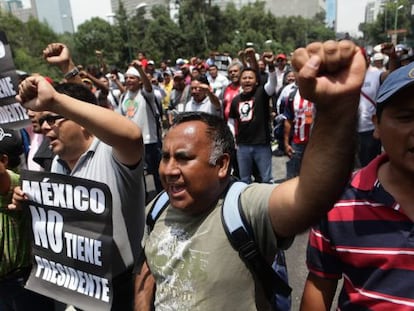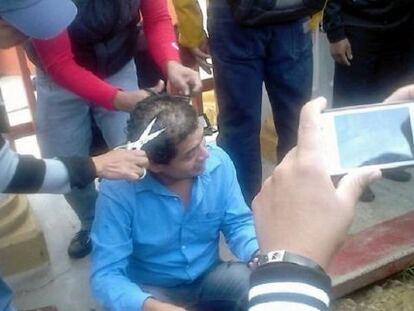Mexico presents education reform despite teacher opposition
New model is scheduled for introduction in the fall of 2017, and will not eliminate evaluations that have triggered protests by dissident labor union


If deadlines are met, Mexican students will begin the 2017/2018 academic year with a new education plan that terminates a 70-year-old model and seeks to raise the country’s historically low student achievement levels.
The reform was one of the star proposals of President Enrique Peña Nieto, and met with significant opposition from teacher unions before and after its parliamentary approval in 2013.
The new model includes greater school autonomy, periodic tests for teachers, and English classes for children from elementary through high school education.
Mexico is one of the OECD members that invests the most in education yet it consistently ranks at the bottom of international student achievement charts
Peña Nieto, of the Institutional Revolutionary Party (PRI), has secured support for his reform from the main teacher union SNTE, which represents 1.5 million education workers. But it is still being rejected by a dissident faction of the CNTE, with around 120,000 members. These protesters have been clashing with government forces, organizing strikes and setting up road blocks to express their discontent at the sweeping changes.
Government officials presented the model on Wednesday at a public event that was not devoid of tension. The night before, government representatives and dissident teachers had met for six hours. The meeting ended with the teachers walking out and demanding that the presentation be cancelled.
Far from doing so, the government sent the secretary of education, a governor and the head of the majority teacher union to an event that was heavy with pomp and ceremony, as though to underscore the importance of this turning point for Mexico’s education system.
Sign up for our newsletter
EL PAÍS English Edition has launched a weekly newsletter. Sign up today to receive a selection of our best stories in your inbox every Saturday morning. For full details about how to subscribe, click here.
“Our proposal is for Peña Nieto’s six-year term to end with a radically different education system,” said government sources.
The public event served as a governmental reaffirmation in the face of dissident teachers who have been routinely blocking access roads into cities. A day before the presentation, three buses were set on fire in Guerrero, and a police officer was forced to walk barefoot and shirtless with a CNTE flag in his hand.
Officials on Wednesday made it clear that the new plan will not eliminate the teacher evaluations that have been at the heart of protests in southern states. But Education Secretary Aurelio Nuño also made a point of insisting that the model is “unfinished” and that the government will revise “the controversial examination depending on the different regions of the country.”
That is as many concessions as the protesting teachers have secured after weeks of frustrated negotiations. Protesters fear being expelled if they fail an evaluation that few of them are prepared for.
At the event, Juan Díaz, the head of the majority union SNTE, criticized his colleagues from the states of Guerrero, Oaxaca and Michoacán, saying that “nobody has the right to turn education into a political and ideological battleground.”
Our proposal is for Peña Nieto’s six-year term to end with a radically different education system
Mexican government official
But even he had words against the evaluation, which he described as being based on 1970s standardized models. “We will analyze its labor and professional impact, and if necessary demand respect for the rights of education workers,” said Díaz.
The new education model will be assessed by schools, experts, parents, academics and chambers of commerce during the month of August. Their input will help develop a final model in December, which will then be implemented in the new schoolbooks for gradual introduction beginning in the fall of 2017, said Nuño.
Mexico is one of the OECD members that invests the most in education – nearly five percent of GDP – yet it consistently ranks at the bottom of international student achievement charts. Domestically, Oaxaca and Chiapas come in last.
English version by Susana Urra.









































